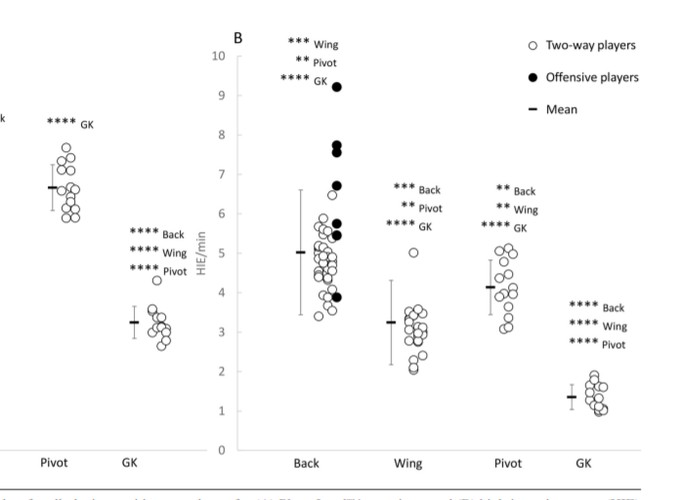Abstract
International women’s team handball is a physically demanding sport and is intermittent in nature. The aim of the study was to profile high-intensity events (HIEs) in international women’s team handball matches with regard to playing positions. Twenty female national-team handball players were equipped with inertial movement units (OptimEye S5, Catapult Sports, Australia) in 9 official international matches. Players were categorized in 4 different playing position; backs, wings, pivots, and goalkeepers (GKs). PlayerLoad™, accelerations (Acc), changes of direction (CoD), decelerations (Dec), and the sum of the latter 3, HIEs, were extracted from raw-data files using the manufacturer’s software. All Acc, Dec, CoD, and HIEs >2.5 m/s were included. Data were log-transformed and differences were standardized for interpretation of magnitudes and reported with effect-size statistics. Mean numbers of events were 0.7 ± 0.4 Acc/min, 2.3 ± 0.9 Dec/min, and 1.0 ± 0.4 CoD/min. Substantial differences between playing positions, ranging from small to very large, were found in the 3 parameters. Backs showed a most likely greater frequency for HIE/min (5.0 ± 1.1 HIE/min) than all other playing positions. Differences between playing positions were also apparent in PlayerLoad/min. HIEs in international women’s team handball are position specific, and the overall intensity depends on the positional role within a team. Specific HIE and intensity profiles from match play provide useful information for a better understanding of the overall game demands and for each playing position.
